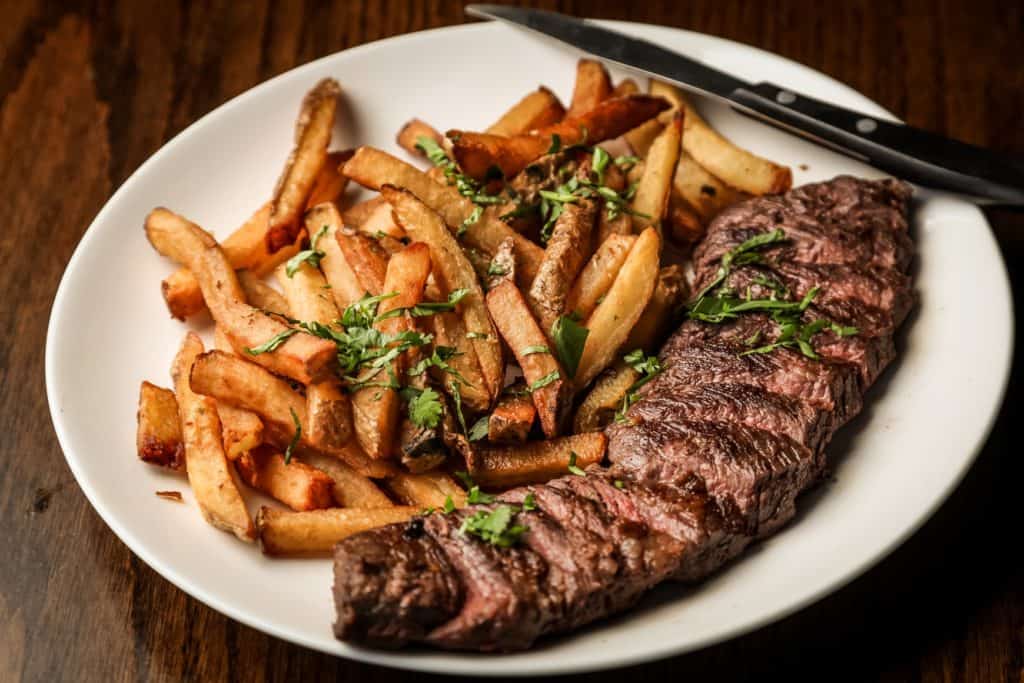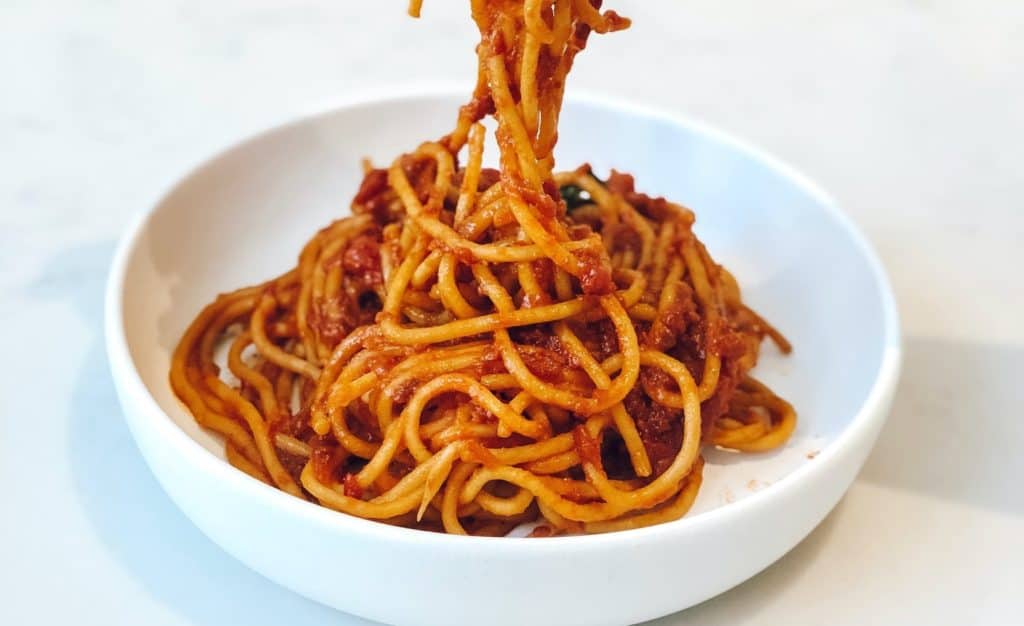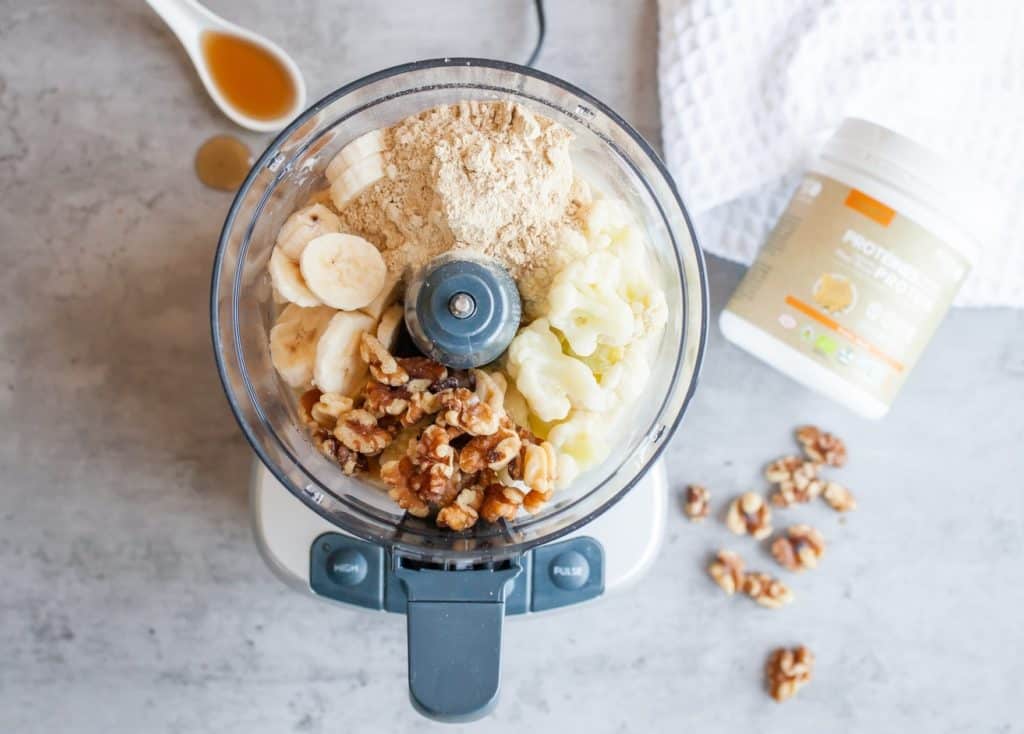
Eating as much as possible seems like a fun endeavor to the average person, but anyone who has gone on a sustained bulking diet will tell you that there are numerous challenges along the way.
First of all it’s not as if you can just eat a bunch of a junk and expect to build quality muscle, as discussed here in our dirty bulking article. The diet must have a reasonable macronutrient balance, with enough protein to promote muscle growth.
Since most junk foods are low in protein and high in carbohydrates, fats, or both, food choices matter when putting together a bodybuilding diet to bulk up. It can be challenging to keep appetite high when eating chicken, oats, vegetables, and potatoes.
With the right strategy, you can formulate a diet that will build muscle sustainably without the need to force feed yourself in an uncomfortable manner. These tools will allow you to increase appetite to make the bulking diet as easy as possible.
Choose Highly Palatable, Calorie Dense Foods
There are no specific foods that unequivocally must be included in every bodybuilding diet. There is a time and place to choose certain foods based on what your fitness goals are.
Grilled chicken breast and steamed broccoli are undoubtedly healthy options, but if the goal is pack in calories then this isn’t the best choice. You’ll be satiated after the meal, but it may only amount to about 200 calories.
Some people have calorie goals of 3,000, 4,000, or more. A low calorie meal like that only makes things harder as the day goes along. You’ll consistently be playing catch up to compensate for a low calorie meal.
No foods should be off limits on a bulk, nor should you feel compelled to include specific foods on a bulk.
Bulking diets are a great opportunity to introduce foods that normally wouldn’t be eaten on a maintenance or fat loss diet. For example, chicken thighs have sufficient protein but also additional healthy fats compared to chicken breast.
The additional fat in a chicken thigh makes it far more palatable and easy to eat compared to a dry chicken breast. Pound for pound, chicken thighs are usually less expensive as well.
Protein sources that are more calorically dense include steak, salmon, and ground meats 90% lean and below.

Boiled potatoes are one of the highest scoring foods on the satiety index; meaning they are considered to be one of the most filling foods given the overall volume. This is great for dieting, but not for bulking. Better, more calorically dense options for carbohydrates would be jasmine rice, granola, cereal, whole grain bread, and pasta. These have more calories on a per serving basis and are also easy to eat in abundance.
Vegetables contain few calories, but understandably people want to keep their diet healthy and not forgo them completely. An easy way to add calories is to sauté vegetables in stable, healthy cooking oils like olive oil or coconut oil. Some people even sauté vegetables in grass fed butter.
Eat a Greater Proportion of Carbs to Fats
Protein requirements for building muscle are standard no matter what the fitness goal, generally falling in the range of 0.8-1g or more per pound of body weight.
However, there is a great deal of freedom when it comes to how you distribute carbs and fats in the diet. So long as it isn’t an extreme (i.e. consuming 0 fats or 0 carbs), there are no limits to how you proportion the two macronutrients.
If the goal is to increase appetite, you should eat a greater proportion of carbs to fats for numerous reasons.
Carbohydrates digest more quickly and easily compared to fats and protein. When trying to consume as many calories as possible, you don’t want foods that digest slowly and seemingly sit in your stomach forever.
On a bulking diet you could conceivably eat up to 55% of your calories in the form of carbohydrates while still meeting protein and fat needs.
Carbohydrates also have a greater impact on blood sugar, which in turn affects appetite. We’ve all experienced times where you eat a meal and are hungry an hour later. In all likelihood the meal was made up primarily of carbohydrates.

Drink Your Calories
The best way to come up with a bulking strategy is to think about the things you shouldn’t do on a weight loss diet.
When cutting, you are told not to drink your calories. Well, this is exactly what should be done on a bulk. 16 ounces of coconut water or fruit juice can amount to 200 calories consumed in mere seconds.
As mentioned earlier, a bulking diet is a perfect moment to consume things you normally wouldn’t on a regular diet. Most supermarkets and health food stores offer a variety of fruit juices packed with antioxidants, vitamins, and minerals.
These are not the typical, made from concentrate, juices. They usually come in a glass container and are made from real fruits and vegetables. You can find juice made from berries, carrots, beets, pomegranate, cherries, and even spices like ginger and turmeric.
If you don’t want to pay up for these juices, you can still drink a non concentrated orange juice that will provide calories and vitamin C.
Homemade protein shakes are an easy way to add calories. Rather than using weight gainers, which are usually just loaded with sugar, you can fully control the ingredients if you choose to make your own.
The principles of creating meals for a bulking diet apply to protein shakes as well. Consuming nutrient dense foods is even easier when it’s blended in a shake. Nowadays protein powders taste so good that you can come up with something enjoyable that you don’t have to hold your nose and chug.
Rather than using water as the base, you can use milk or almond milk for additional calories. There are numerous carbohydrate sources that can be added, like frozen fruit, honey, or oats. Fats like peanut butter and almond butter can easily add 400 calories on their own.
For additional protein, you could even blend in Greek yogurt along with the protein powder itself. With the range of protein powder flavors on the market coupled with the food combinations that can be added, there are countless ways to come up with shake ideas.
Don’t Completely Forego Cardio
Excessive cardio will obviously not be beneficial on a bulk, as the calories burned from cardio would be counterintuitive to the diet itself. However, light cardio can be a tool to increase appetite.
We’re not recommending a 5 mile run or a 45 minute circuit training class. But a 15 minute light walk can aid in digestion, particularly if done shortly after a meal. This level of activity is mild enough that it would not induce much of a calorie burn, while still providing a benefit to increase hunger.
This is becoming a popular practice among powerlifters and strongman competitors, who eat upwards of 10,000 calories per day. They will consume a meal and go for a short walk afterwards.
Lying around after a big meal can make it feel like the food is just sitting in the pit of your stomach forever. You may be surprised how much a walk around the neighborhood can stimulate appetite all over again.
Recent Posts
Stretching Before Workouts: Essential Warmup or Performance Killer
“Don’t stretch before workouts, your muscles become too supple” “Stretch before your workouts, warming up is important” It's conflicting advice like this that drives people crazy,...
Best Protein Bar For the Money | Cost Effective, High Quality
Protein bars are no longer a supplement dedicated to diehard gym rats, with awful taste and the consistency of a brick. Men, women, and even teenagers can commonly be seen eating protein bars. The...
